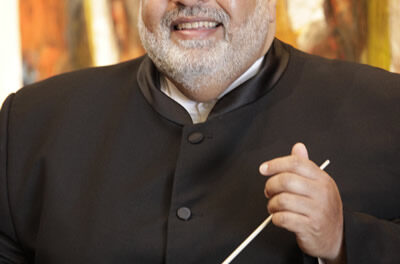Despite miserable weather, a larger than normal house was on hand in the Fletcher Opera Theater for the Raleigh Chamber Music Guild’s local debut of the Miró String Quartet. The occasion was auspicious because the musicians were playing on a set of instruments specially commissioned by RCMG Board Member Mark Furth and given to the quartet in July 2002. The maker of this superb set of strings, Frank Ravatin of Vannes, France, was present at the November 17 concert. There was ample aural and visual evidence for his wide recognition as one of the finest contemporary luthiers.
The quartet selected three well-known works to display the quality of the new instruments and their own consummate mastery of the literature. The concert opened with Mozart’s Quartet in B-flat, K.458 (“Hunt”), followed by Shostakovich’s Quartet No. 8, in C Minor, Op. 110. After intermission, the concert ended with the very frequently played Quartet in F, Op. 96 (“American”), by Dvorak.
Ravatin’s instruments sounded magnificent. They have all the warmth and color one could ask for – rich lows in the viola and cello and clear highs, easily projected by the violins. From the most hushed passages to the loudest pizzicati, the tone is excellent. The beautiful finish of the wood made them works of art.
Instruments are only as good as those who play them, and none of the advance praise that the Miró Quartet received was exaggerated. At the intermission, the audience chattered with amazement at the extraordinary ensemble playing just experienced. All the works were interpreted within current norms, but the Miró’s members brought their own points of view to them. The players’ equal skills were marvelous; both violinists were true equals, and the give and take among the players was of a very rare quality. As an encore, the quartet exploited all the humor of the comical finale of Haydn’s Quartet in E-flat, Op. 33/2 (“The Joke”).
A quartet from Enloe High School provided the pre-concert music.
Durham’s Chamber Arts Society seems to have the Tokyo String Quartet as its “house ensemble.” The RCMG would be wise to make the Miró Quartet theirs and, dare we hope, have them work their way through the whole of Shostakovich’s rich treasures! The Miró joins with the Borromeo String Quartet as tops among the newer generation.











